I explored the collaborator module for this multimedia reflection. I chose to do a sketchnote in response to the module.
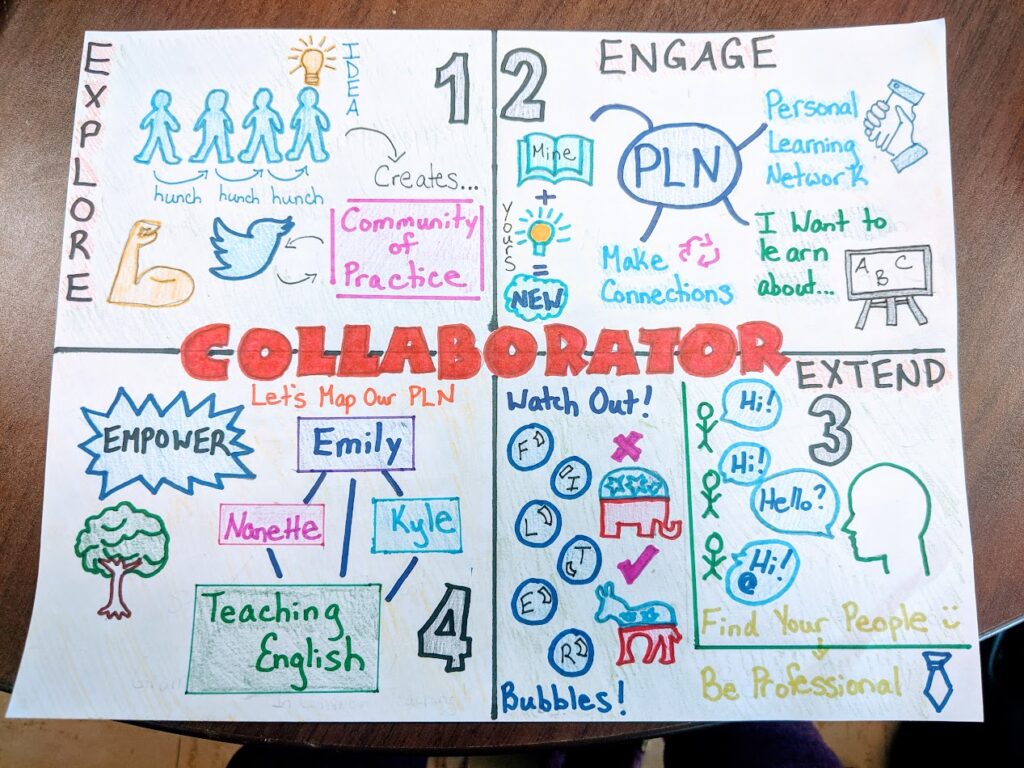
Creating a sketchnote was a lot harder than I thought it would be, but it was also really fun. For my last multimedia reflection, I created a Twitter essay, but completing this reflection made me realize that the affordances of pencil and paper are much different than online/digital affordances. For example, my Twitter essay was limited to a certain number of characters, and I could only add one image to each Tweet. In contrast, I was free to use as many images and words as I wanted when making my sketchnote, but it was up to me (not a predetermined template) to create a visually appealing balance of words and pictures.

My Twitter essay last time was mainly composed of words, as Twitter allows, and when making my sketchnote I found it difficult to not just write a ton of words in summary without any pictures; it was difficult because it was outside my comfort zone. Overall, I did enjoy the challenge of creating this sketchnote. I loved being free to use colors and doodles as I saw fit, without the limits of a computer. Keep reading below for an awesome summary of the module!
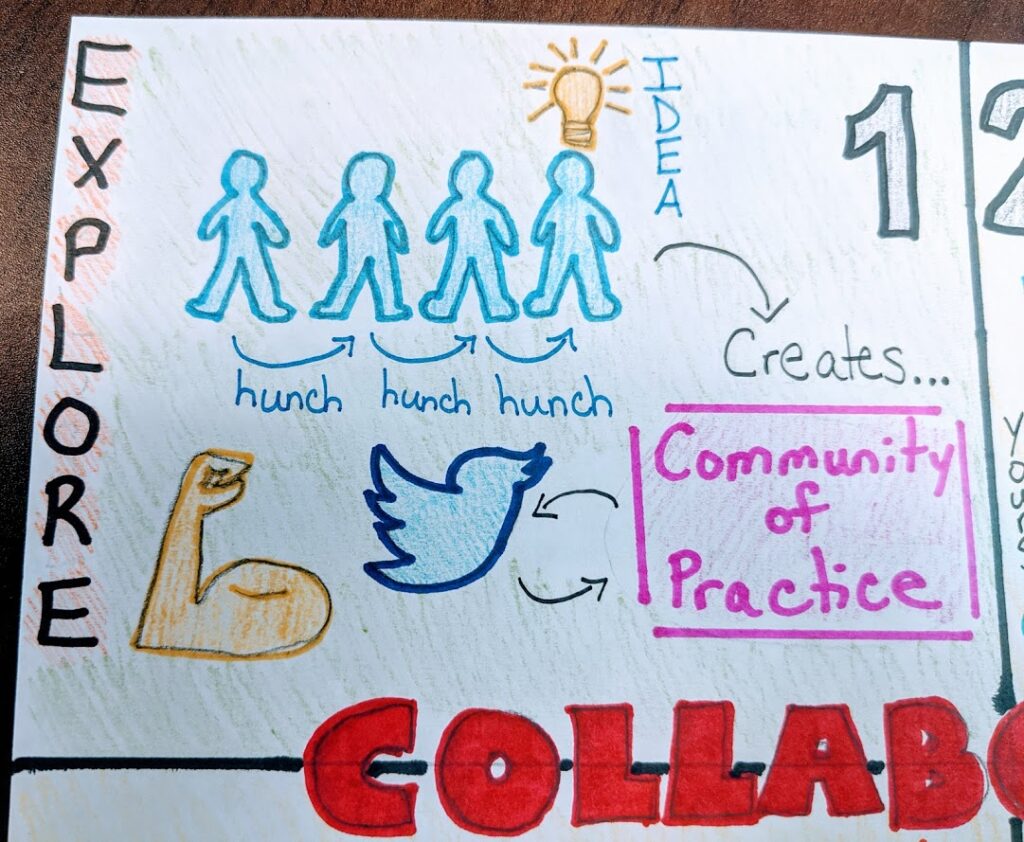
Collaborators are people, in this case mainly educators, who want to share their knowledge and gain new knowledge. From the video “Where Good Ideas Come From” I learned that it is important for us to have small hunches (ideas). We can share these ideas with others, and eventually other people’s hunches meld with our own to become a brand new idea! Share enough ideas with others, and you get a community of practice, where you meet online with like-minded people to share ideas and knowledge. The power of Twitter cannot be overlooked; it is one of the most popular ways to engage with other like-minded people online. I like the idea of Twitter as a meeting space for educators; we hear so much about the downfalls of Twitter (fake accounts, etc.), so it is great to know it is a digital tool that can benefit us.
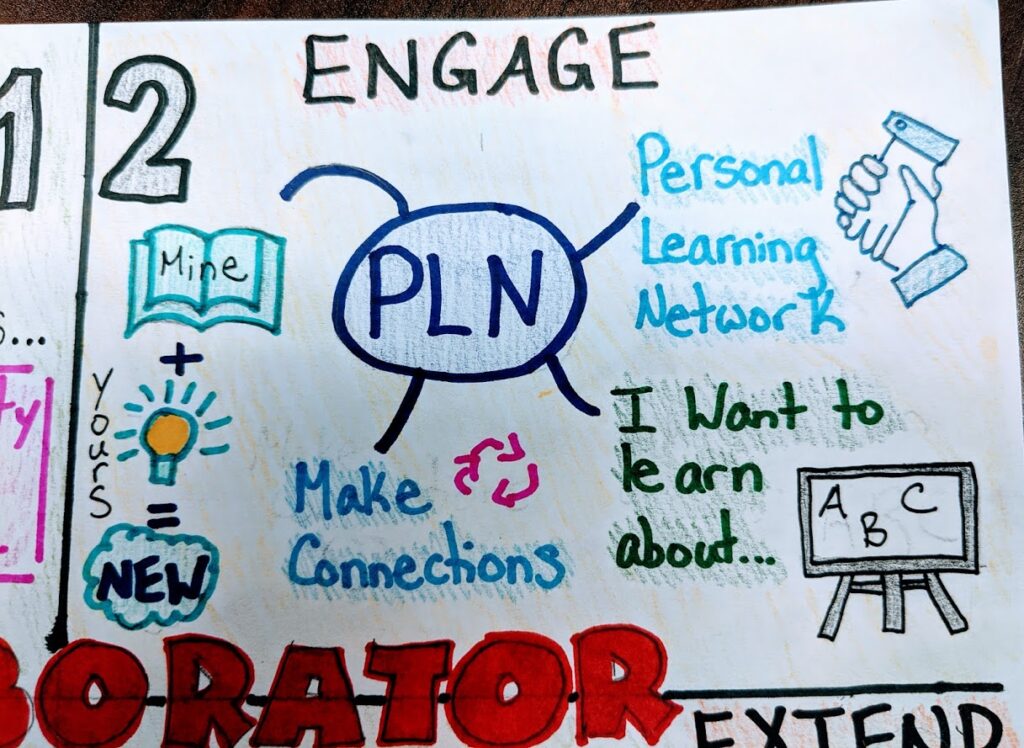
A PLN is a personal (or professional) learning network. To engage with people and work on your PLN, you need to first consider what topics you are interested in learning more about. Once you know what you want to learn, then you can start making connections. Eventually, you can take aspects of other people’s work and add your own work to create exciting new ideas. I really like the concept of using other people’s ideas as a starting point to create new, exciting content.
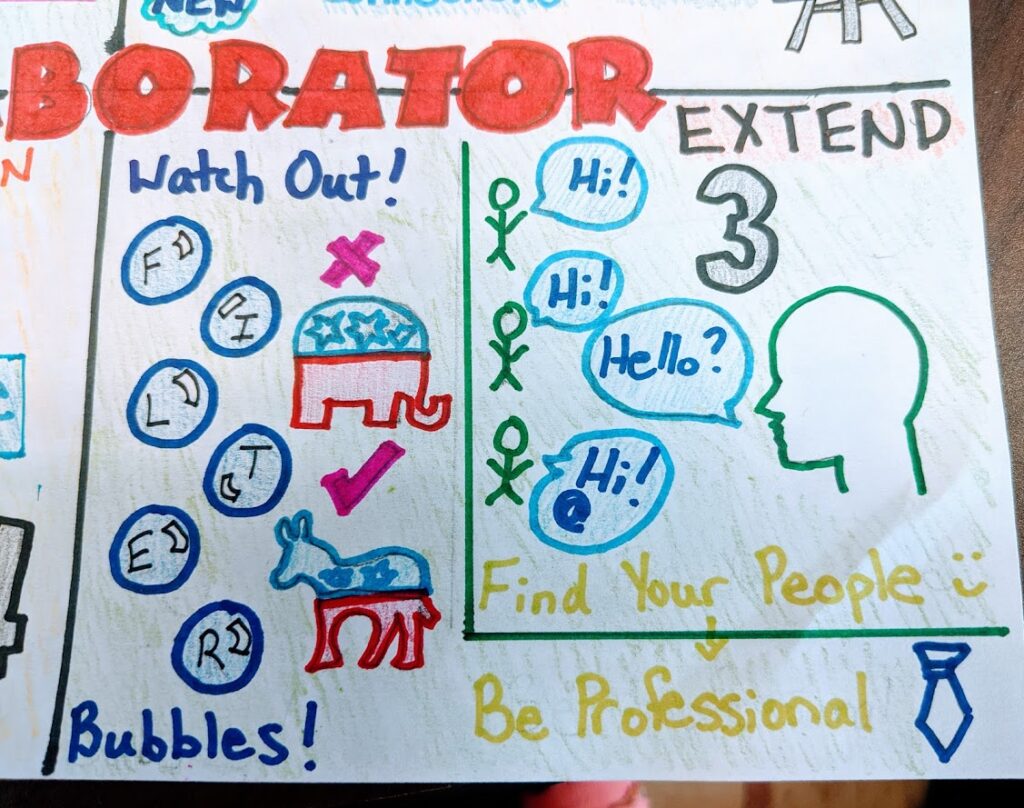
The module suggests you should pay attention to how people share their contact information at conferences. If they share their Twitter handle, that is where you are most likely to find them and extend your PLN. Be careful as you create your PLN, because filter bubbles are everywhere online. Your search results are tailored to already held beliefs and based on previous search history, so you might miss out on valuable perspectives if you don’t actively seek them out. I was intrigued by the concept of filter bubbles, because I had not really thought about them before. And frighteningly, much of the general public hasn’t heard of them, so we have to be more vigilant than ever in letting our students and online contacts know these exist.
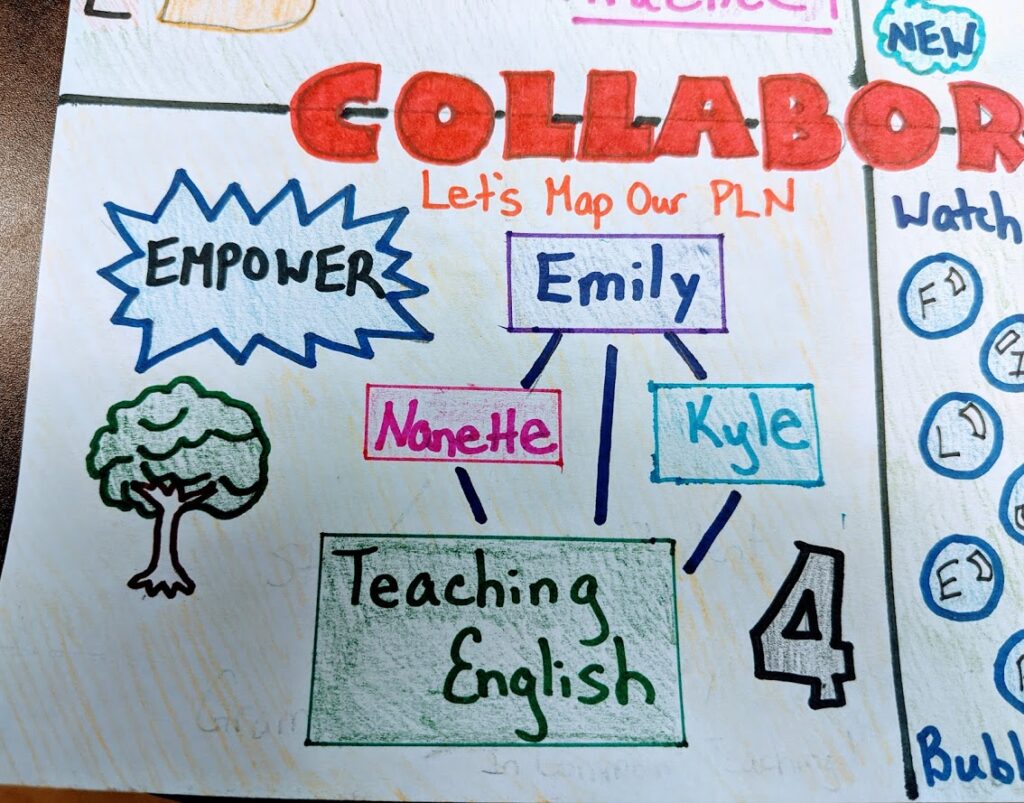
Mapping your PLN is an awesome way to see who you are connected with, and where there are gaps in your knowledge that need to be filled. I did a mini map of my school friends, with our common interest being teaching English in particular.

Anyone can have a PLN, and it can be enormously beneficial to your life as an educator to engage with other educators online and create new innovations in teaching and learning. Thanks for reading!
